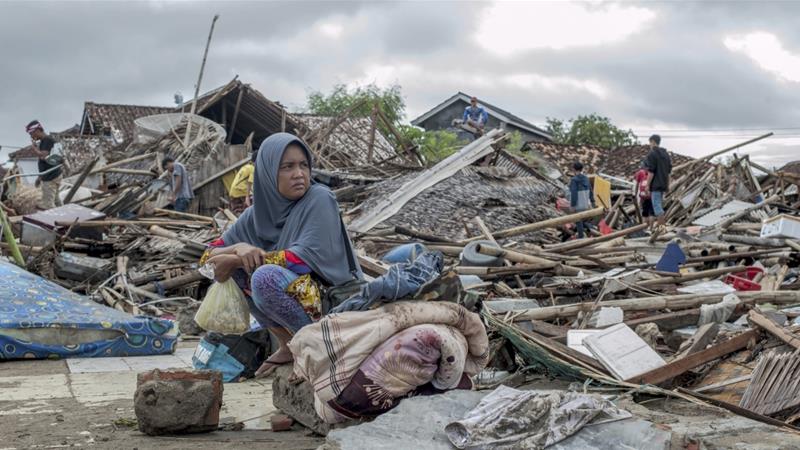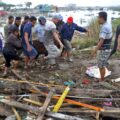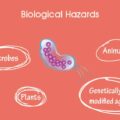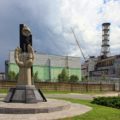Natural hazards are naturally occurring physical phenomena caused either by rapid or slow onset events. A widely accepted definition characterizes natural hazards as “those elements of the physical environment, harmful to man and caused by forces extraneous to him.”More specifically, in this document, the term “natural hazard” refers to all atmospheric, hydrologic, geologic (especially seismic and volcanic), and wildfire phenomena that, because of their location, severity, and frequency, have the potential to affect humans, their structures, or their activities adversely. The qualifier “natural” eliminates such exclusively manmade phenomena as war, pollution, and chemical contamination. Hazards to human beings not necessarily related to the physical environment, such as infectious diseases, are also excluded from consideration here.
There is a range of challenges, such as climate change, unplanned-urbanization, under-development/poverty as well as the threat of pandemics, that will shape humanitarian assistance in the future. These aggravating factors will result in increased frequency, complexity, and severity of disasters.
A hazard is distinguished from an extreme event and a disaster. An extreme event is simply an unusual event; it does not necessarily cause harm. Note that many hazards have both natural and artificial components. Because hazards are threats of harm mainly to human systems, human activities play a large role in how severe a hazard is. For example, when large numbers of people crowd into floodplains and low-lying areas, they are putting themselves in harm’s way, increasing the severity of potential floods.
Common Types of Natural Hazards
Natural hazards can be classified into several broad categories: geological hazards, hydrological hazards, meteorological hazards, and biological hazards.
Geological hazards: are hazards driven by geological (i.e., Earth) processes, in particular, plate tectonics. This includes earthquakes and volcanic eruptions. In general, geological extreme events are beyond human influence, though humans have a large influence on the impacts of the events.
Meteorological hazards: are hazards driven by meteorological (i.e., weather) processes, in particular those related to temperature and wind. This includes heat waves, cold waves, cyclones, hurricanes, and freezing rain. Cyclones are commonly called hurricanes in the Atlantic and typhoons in the Pacific Ocean.
Hydrological hazards: are hazards driven by hydrological (i.e., water) processes. This includes floods, droughts, mudslides, and tsunamis. Floods and droughts can cause extensive damage to agriculture and are among the main contributors to famine. The deadliest natural disaster in world history (not counting pandemics) was the 1931 Central China floods, killing three or four million people.
Biological hazards: are hazards driven by biological processes. This includes various types of diseases, including infectious diseases that spread from person to person, threatening to infect large portions of the human population. Many discussions of natural hazards exclude biological hazards, placing them instead within the realm of medicine and public health. If biological hazards are counted, then they include the deadliest disasters in world history, including the Black Death outbreak of bubonic plague in the 1300s, killing 75-100 million people, and the 1918 “Spanish” flu pandemic, a global affair (the name “Spanish” is due to historical coincidence) killing 50-100 million people. A more recent example is the COVID-19 pandemic.
An understanding of geographic concepts has been integral for answering questions like where the virus is more prevalent, where it is more deadly, how fast it moves, and how do we prevent its spreading? It also helps us to see that natural disasters are not always purely natural. Human actions have been important for both the spread and containment of the virus. While biological hazards are undoubtedly important, they are not discussed in detail in this module.
It is possible for an extreme event to fit within more than one of these categories. For example, volcano eruptions (a geological event) block incoming sunlight, potentially enough to cause cold waves (a meteorological event). This happened in a dramatic fashion in 1816 when the Mount Tambora eruption caused the ‘year without summer’ in the Northern hemisphere. Volcano eruptions can also cause tsunamis (a hydrological event); some of the largest tsunamis ever occurred when volcanoes along coasts caused large landslides into the water. Earthquakes (a geological event) that occur underwater can also trigger tsunamis (a hydrological event), such as the 2011 Japan Earthquake and Tsunami.
Systems of Hazards
One extreme event can often be hazardous in several ways. For instance, an earthquake may destroy buildings, cause landslides, and rupture sewer and water lines. The ruptured lines may, in turn, contaminate water, causing water-borne diseases such as cholera. Indeed, a cholera outbreak happened after the 2010 Haiti earthquake because of disruptions to clean water supplies.
Likewise, a single natural hazard can have many impacts. For instance, hurricanes involve high winds, torrential rain, flooding, and storm surges. The winds may remove roofs and topple power lines. The floods may inundate roads, homes, and schools. Ecosystems can be damaged, threatening wildlife. Some impacts can even be beneficial. A hurricane churns up ocean water, cooling surface water and thus reducing the risk of another hurricane in the same area. Keeping track of these systems of hazards and impacts is an important part of the study of hazards.
Who Studies Natural Hazards?
Contemporary research on natural hazards is interdisciplinary. Natural scientists study the nature of the extreme events involved in hazards. Social scientists study the human dimensions of the impacts and responses. Policy researchers, engineers, and ethicists study what can and should be done to prepare for hazards and to respond to them when they occur. Some specific fields active in natural hazards research include geography, medicine, and public health, psychology, economics, engineering, and sociology. Cartography and geographic information science are increasingly important because these fields help analyze important spatial information about hazards. Later in the module, we will see some examples of how cutting-edge information technology is being used to revolutionize disaster response.
Career Options
For better or worse, natural disasters occur frequently and cause much damage, creating the need for dedicated natural hazards professionals. Hazards professionals are employed in government, in private for-profit and non-profit organizations, and in universities and research institutes. People work in characterizing hazards, preparing communities for hazards, providing emergency services after disasters strike, helping communities rebuild, documenting disasters, and raising awareness. People work as project managers, database analysts, operations analysts, environmental experts, and psychiatric consultants. The largest U.S. government employer for disaster management is the Federal Emergency Management Agency (FEMA). Major international organizations involved in natural hazards include the United Nations World Food Programme and the United Nations Educational, Scientific, and Cultural Organization (UNESCO). Major non-profit/non-governmental organizations include the Red Cross/Red Crescent organizations, Catholic Relief Services, Oxfam, and Mercy Corps. Many people in these and other organizations focus exclusively on natural hazards projects. Others combine work on natural hazards with work on other issues, which is appropriate given how tightly connected natural hazards are to so many other issues.






